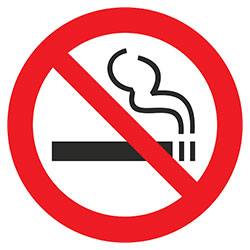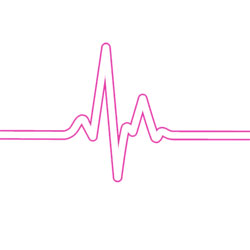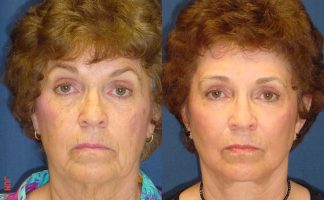What is Laser skin resurfacing?
Laser resurfacing of the skin is a method to make the skin of the face appear younger looking. Generally speaking, the laser creates damage to the top layers of the skin, which signals new cells to be regenerated. Although it is not ‘surgery,’ it is a procedure which requires some degree of sedation or anesthesia. It can be performed in an office setting under local anesthesia, or it can be performed in the operating suite at the same time other procedures are being done.
There are now many types of lasers on the market. However, the two most common types are:
- CO-2 laser: Uses short pulsed light energy or continuous light beams to remove top layers of skin
- Erbium: Ablates only the top layer of skin (epidermis)
What problems does Laser skin resurfacing address?
What can I do for sun damaged skin and fine facial wrinkles? -a Maryland patientLaser skin resurfacing can help the following conditions:
- superficial fine lines
- moderate wrinkles
Is there an alternative treatment to Laser skin resurfacing?
Yes, there is a great alternative to Laser skin resurfacing! It is called Fat transfer and/or Fat grafting. The process of tissue regeneration works without having to destroy tissue first. The active process is initiated by adipose stem cells which reside in your own fat. They send the signaling to tissue and skin to repair and rejuvenate. This is a huge promising new field of medicine! Adipose stem cells are the new frontier of plastic surgery. For many years, I no longer perform Laser skin resurfacing. I now prefer to perform Fat grafting to the Face instead of Laser skin resurfacing for facial rejuvenation. To read more about why I prefer Fat grafting over Laser skin resurfacing, read my blog post here!What is the patient satisfaction rate of lasers?
My clinical experience is that only "a majority" of patients have favorable results in which the patient is happy. About 20 years ago I stopped doing lasers because I thought a 'majority' wasn't an acceptable rate of satisfaction. Technology has improved, but I still don't consider them a good option for the face. In the past 15 years, patients from all over the world have contacted me to repair damage that was done to their faces from various types of lasers. I do believe that Fat Grafting can help the vast majority of these patients.Can Laser skin resurfacing create fat atrophy or fat loss in my face?
I believe that the answer is yes. I have seen scores of patients who have suffered from facial fat loss after laser treatments. I am constantly contacted by patients who have experienced facial fat atrophy after having laser procedures. It is unknown exactly what the mechanism is, but it is likely due to apoptosis (cell death) of some of the cells. For this reason, I no longer use laser resurfacing to rejuvenate the skin. Instead, I use fat grafting.How is Laser skin resurfacing performed?
Anesthesia
CO2 laser resurfacing is generally performed under IV anesthesia or General anesthesia. Erbium lasers do not penetrate as deeply and are often performed under local sedation.Method of action
The lasers evaporate the top layers of skin. However, Erbium lasers are typically confined to the epidermis only, while CO-2 lasers go deeper. After the laser treatment, layers penetrated will continue to peel or shed for the next few days and a new layer will then regenerate. Thus, regeneration of the skin is prompted by the destruction caused by the laser. In other words, after the laser destroys the top layers, signals are sent to the tissues and skin to rejuvenate.What are the preoperative requirements?
 Patients should:
Patients should:
- stop taking ibuprofen, aspirin, and herbal products for 2 weeks before surgery
- stop smoking 4 weeks prior to surgery
- notify your doctor if you develop a cold sore or fever blister in the 2 weeks prior to your procedure
- CONSIDER doing fat grafting instead of laser resurfacing!
What is the Laser skin resurfacing Post-Op recovery like?
The skin must be protected during the healing period by applying ointments every few hours, or a gel dressing that can stay on for 12 hours, or a silicon dressing that can stay on for a few days. Redness of the skin may persist anywhere from a few weeks to a couple of months, but it can be covered with cosmetics. Patients should protect the skin from sun exposure afterwards. Follow your surgeon's instructions depending on what type of laser was used.What are the risks and possible complications?
 Complications and risks of Laser skin resurfacing include the following conditions:
Complications and risks of Laser skin resurfacing include the following conditions:
- burns
- scarring
- changes in skin pigmentation
- infection
- facial fat loss*
How much does Laser skin resurfacing cost?
Laser resurfacing prices vary quite a bit, and depend on the type of laser used. Contact your surgeon to get a list of prices, and be sure to be clear on what the fee includes, and if you may need additional treatments.

Board Certified Plastic Surgery, ASPS Member
NOTICE
Patients depicted in our before and after galleries have provided their written consent to display their photos online. Every patient is unique, and surgical results may vary. Please contact us if you have any questions.
Reviews (0)

